"From here, you get a breathtaking view of what will happen in the 20th century. The Holocaust, the Khmer Rouge, Rwanda, former Yugoslavia. But also the creation of the European Union. The peaceful utopia that people will reject in the 21st." The caption, in French, for The Great War by Nicolas Vadot (living in Belgium, with British, French and Australian heritage), is one of the cartoons about or inspired by the Armistice centenary, and war generally, in the Galway Cartoon Festival.
Sigmund Freud characterised cartoons as double-edged: by attacking the enemy and showing him as small, low, despicable, comic, ridiculous, "we give ourselves the enjoyment of a victory'', but our laughter also gives us a release from constraint.
The cartoon festival opens today, and its coincidence with Armistice Day made for an obvious theme. As well as commemorating the end of the first World War, director Richard Chapman looked for cartoons about the intervening 100 years. He was eager for cartoons "about live issues, from anywhere in the world". And they have been "flooding in", most particularly from France, UK, Italy, Belgium and Ireland. It has been, he remarks, "a century of violence and upheaval - much, arguably, as direct consequence of this very peace settlement. From the first World War through the Cold War to the War on Terror, the planet has hardly had a quiet moment. Which is why we call the show A Peace To End All Peace".
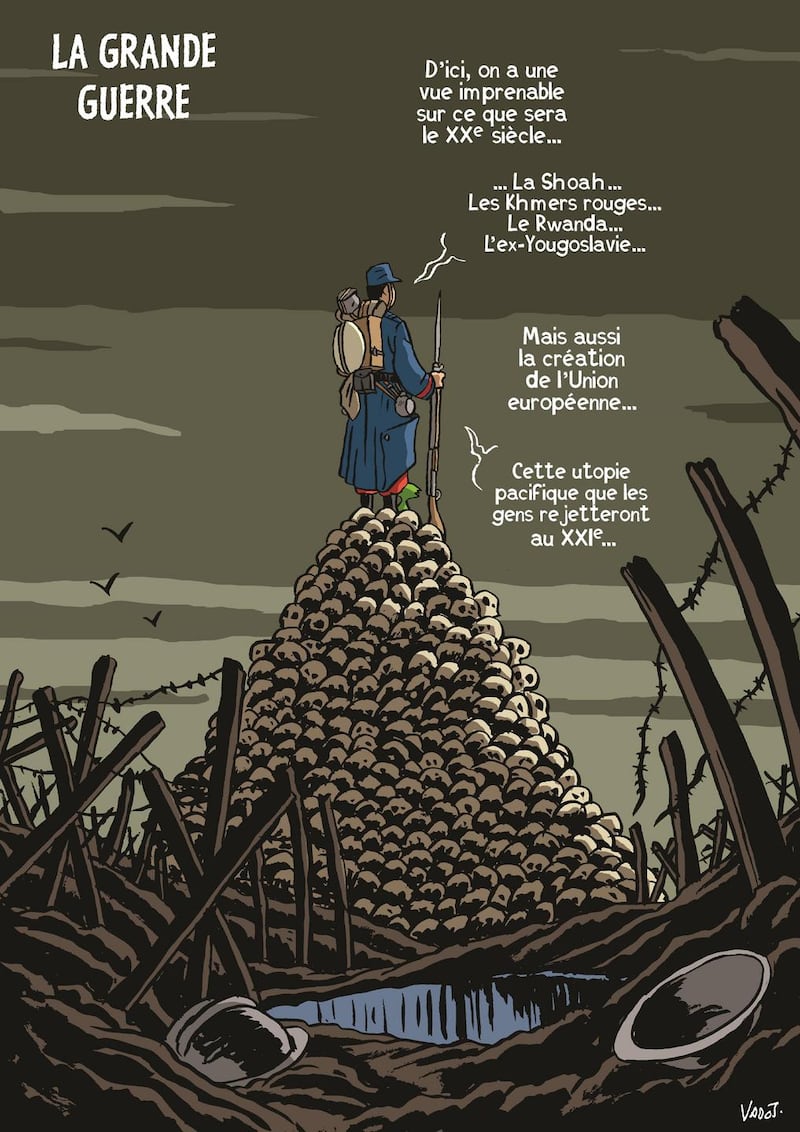
The “ninth art”, as the French call it – comics, caricature, and cartoons – was absent from Galway’s festival calendar, and last year’s inaugural “international festival of funny drawings” started small. This year’s is a giant step, with work by over 70 international cartoonists in several venues.
Chapman was "blown away by the response from far-away places. Why do cartoonists in China or Argentina or Russia send their work to Galway? I have no idea how people in China even heard about the festival. I thought the Russian work was particularly interesting because of how anti-militaristic it was. That is not an image we get of Russia from the media – even Russian media. Even more telling was that of all the Russian drawings we received, not one was of Putin. That's pretty chilling."
People think of cartoons as humorous, but "not a lot of the war material was hilarious of course. Interestingly the funniest, to my mind at least, was from Germany, by Teja Fischer. "

Another take he singles out is Peace Sign by Gatis Sluka from Latvia, which "encapsulates the cynicism of the aggressor in one devastatingly simple image. I think of it as a visual reply to the ancient adage 'If you want peace, prepare for war'. Those who are preparing for war always claim to want peace."
Martin Rowson's Guardian drawing sees a parallel – or connection – between Britain bogged down in the slimy trenches of war and the invidious position Theresa May's government is in over Brexit.
Festival guest of honour Marilena Nardi is "one of the most astonishing talents in cartooning today," says Chapman. Among her work in Galway is a portrait of Mata Hari (Margaretha Geertruida MacLeod, née Zelle), who knew powerful men all over Europe and was asked to spy by both sides. She was executed by firing squad in 1917 France.
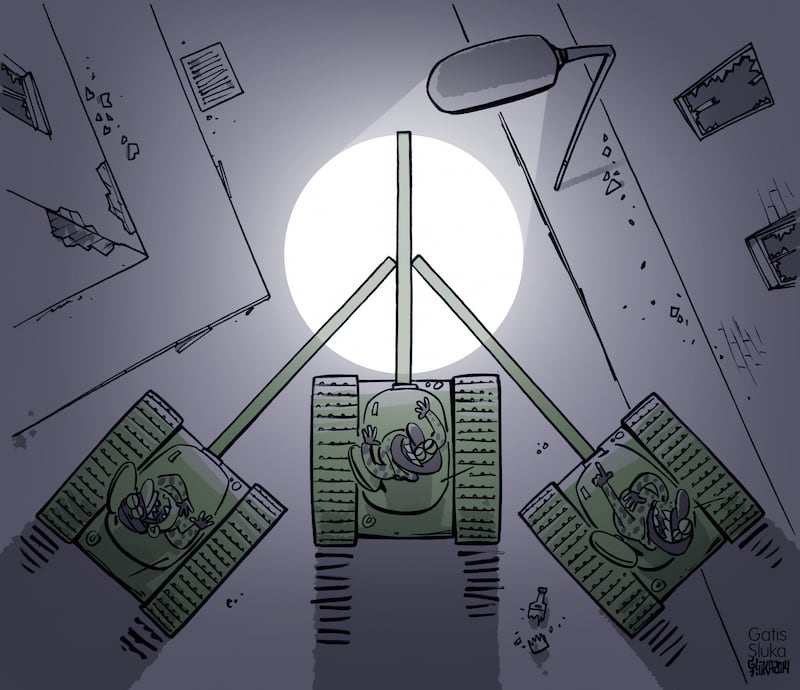
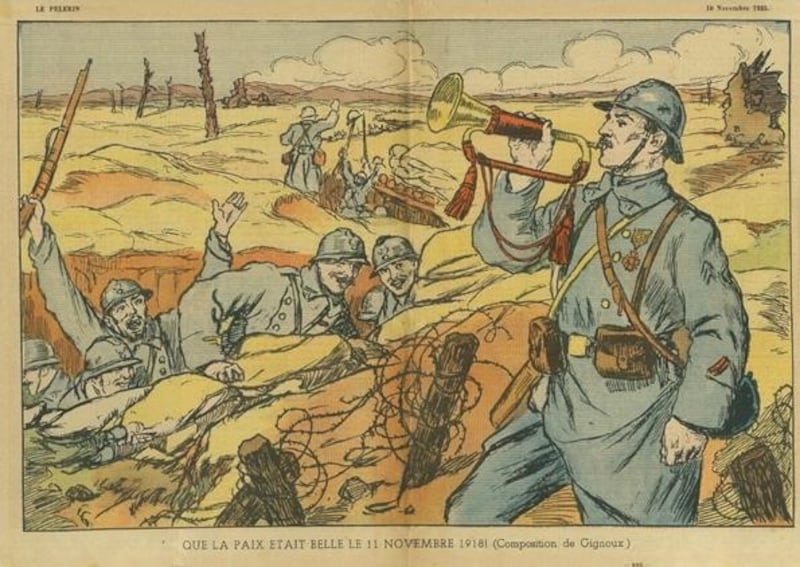
A conference and exhibition in NUI Galway (with the French department and the Embassy of Belgium), explore the impact of cartoons during the war, and renowned Belgian comic author Jean Claude Servais will explain the creative process behind his comics, especially wartime stories.
Catherine Gagneux talks in the conference about the rise and influence of cartoons, using original drawings from the exhibition. French honorary consul Gagneux says wartime cartoons initially aimed to boost troops' morale by satirising and ridiculing the enemy; keeping up appearances and maintaining morale became vital to war efforts. Some popular British cartoonists included William Haselden (Daily Mirror), Joseph Morewood Staniforth (News of the World) and Owen Jeanan (Punch) ; in Germany Thomas Theodor Heine stood out and in France Jean Jacques Waltz 'Hansi', Forain, and Poulbot.
Le Rire in France justified publishing wartime cartoons: "In these horrible and tragic, but highly glorious hours . . . the Rire [laughter] is by no means inappropriate, but on the contrary necessary."
In Germany, says Gagneux, cartoon propaganda was less humorous and focused on glorifying war heroes, while in Britain, the military's propaganda department recruited artists and writers, and atrocity propaganda mobilized public opinion against Germany. Cartoonists were considered enlisted in intellectual military service, and Soldats de l'arrière were asked to relate positive views.
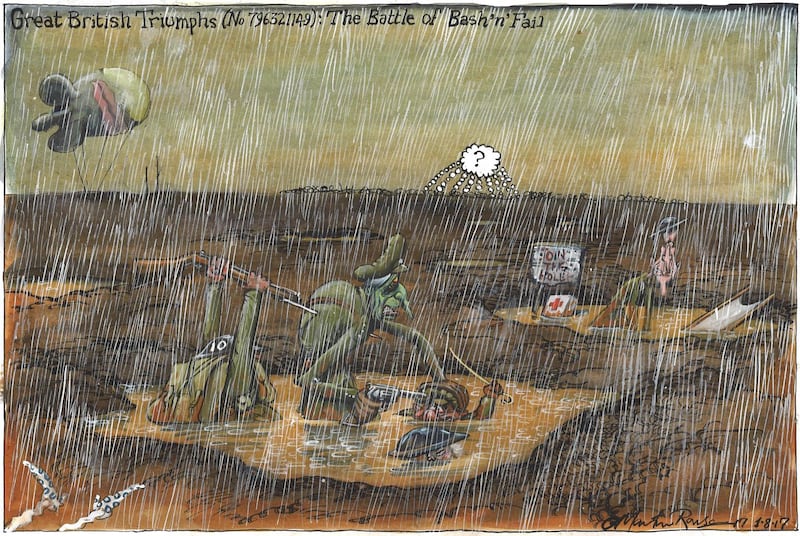
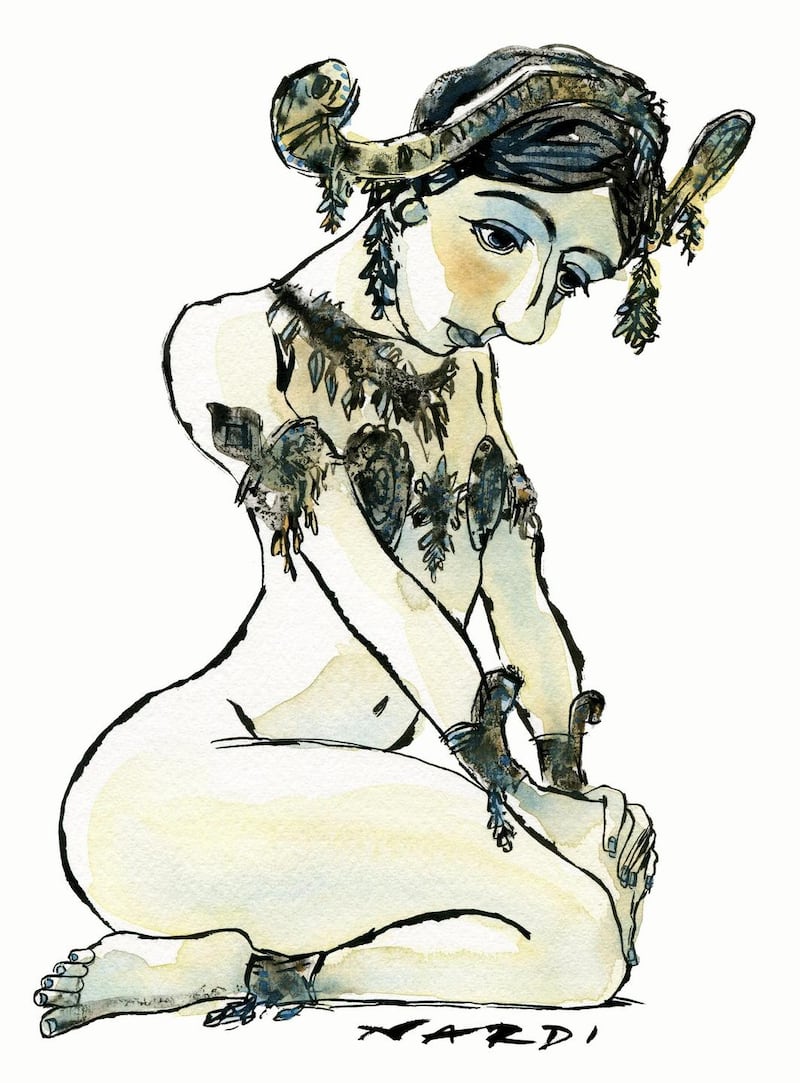
In the conference NUI Galway's Philip Dine explores post-Armistice world order as seen in Hergé's Tintin adventures, while colleague Coralline Dupuy looks at the politics of gender representation in French-speaking wartime cartoons.
UCC professor Grace Neville will discuss press cartoons in Ireland after 1916. The scarcity of political cartoons in the mainstream Irish papers, including The Irish Times, contrasts with France and Belgium, where political cartoons were rich and plentiful. The skilled drawing in 1918 Irish newspaper ads didn't translate into cartoons, political or otherwise, says Neville. But interestingly, Irish subjects featured in French and Belgian cartoons, including the troubles, the perceived German threat in Ireland, Irish soldiers in the war, and – from shortly afterwards – the burning of Cork and the death of the Lord Mayor Terence MacSwiney in 1920. Neville mentions a French cartoon: "in the background we see Cork city burning; in the foreground two people are discussing holidays. One says that he would like to go to somewhere quiet. 'Have you considered Cork?', asks the other."
The cartoon festival celebrates 100 years of Polish independence, including Polish Country Dances, drawings by Maria Apoleika. Spreading its wings wider, there's a retrospective of one of Ireland's most popular cartoonists Graeme Keyes, a regular in Private Eye and Phoenix magazines (he's responsible for lots of their word-bubble covers), as well as the Irish Daily Mail. Stephen Dee's "three-dimensional cartoons" include miniature-scaled porcelain caricatures and his Sculptories (in Tigh Neachtain and Charlie Byrne's bookshop windows) are antique wooden printers' trays populated by tiny, intricate porcelain figures to form a narrative, like a strip cartoon.
A Peace to End All Peace is at the Black Gate Cultural Centre in Galway. Graeme Keyes's retrospective is at the Town Hall Theatre. Maria Apoleika creates a new Polish country dance live at the Cornstore, on Sunday, November 11th, noon-5pm (no actual dancing involved!). The Cartoons in WW1 conference takes place on Saturday, November 10th, at the Hardiman Research Building, NUIG, at 4pm












